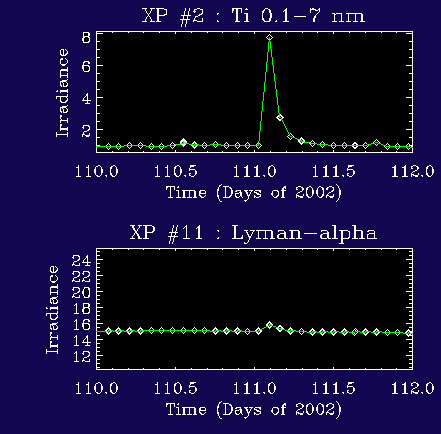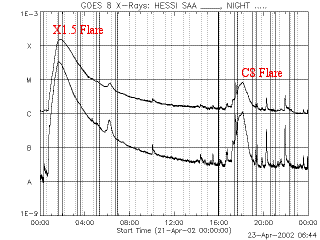
The SEE XUV Photometer System (XPS) recorded the decay of the X1.5 and C8 flares on April 21, 2002. With SEE only observing the sun about 3 minutes per orbit (96 min period), it is unusal for SEE to observe flare events. Because this X-class flare lasted for several hours, SEE was able to capture the decay of these two large flares. SEE did not observe the initial rise or peak of the flares. The X-ray (corona) emissions show about a factor of 8 increase in irradiance; whereas, the other UV emissions, for example the Lyman-alpha (121.6 nm) emission plot shown here, only increased by a few percent for the irradiance (full-disk intensity).

The spectral information of this flare is shown from the SEE XPS instrument. The XPS consists of 8 broadband (~5 nm) XUV photometers from 0-34 nm and a photometer for the H I Lyman-alpha emission. The SEE EUV Grating Spectrograph (EGS), which has a spectral range of 26 to 195 nm with 0.4 nm spectral resolution, only observed small changes (few percent), similiar to the level of the XPS Lyman-alpha measurement.

- View TIMED Animations of the flare.
- SOHO Pictures and Movies

